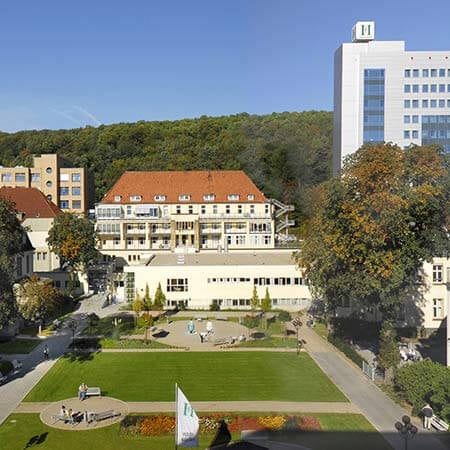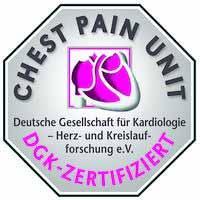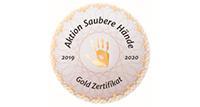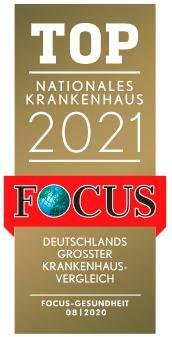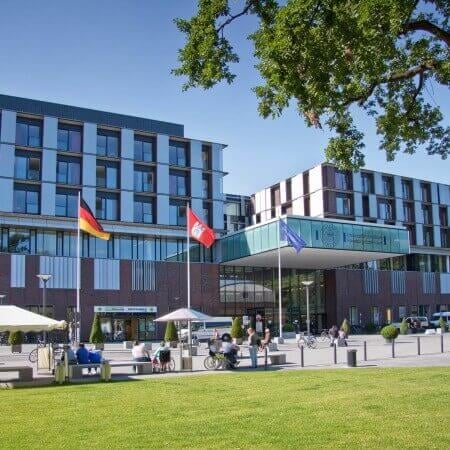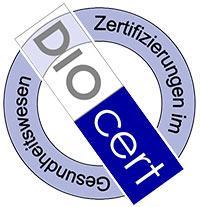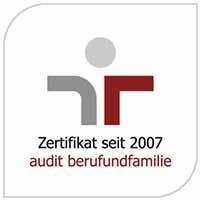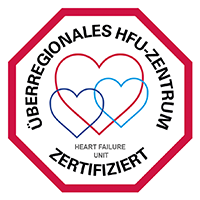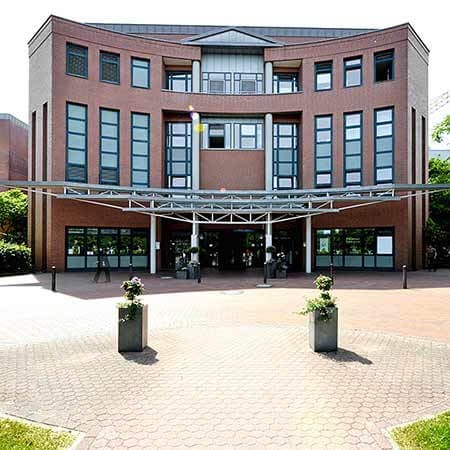Atrial fibrillation (abnormal heart rhythm) is the most common heart rhythm disorder. Fibrillation refers to the chaotic electrical activity of the atria with a frequency of up to 700 per minute. The rhythm of the ventricles becomes irregular. Pathology occurs in the population with a frequency of 1-2%. At least 6 million people in Europe suffer from this heart disease. It is associated with 20% of all cases of ischemic stroke.
Atrial flutter is less common. It is a very rapid contraction of the corresponding parts of the heart with a frequency of 250-400 per minute. The rhythm of the ventricles is preserved, but usually accelerated to 150 per minute or more. This is a dangerous condition, especially if it lasts more than 2 days. Patients have an increased risk of blood clots, which most often appear in the left atrial appendage. Patients may develop severe and potentially fatal thromboembolic complications – blood clots enter the arterial bed and clog large vessels. The most common complication is ischemic stroke. Hospitals in Europe offer efficient treatment of atrial flutter. The cost of treatment is determined individually.
Content
- Causes of atrial fibrillation
- Lifestyle modifications
- Drug treatment
- Electro-impulse therapy
- Cavotricuspid isthmus ablation
- AV node ablation with pacemaker implantation
- Left atrial appendage closure
- Surgical treatment
- How to get treatment in the world's leading hospitals?
Causes of atrial fibrillation
The immediate cause of atrial flutter is usually the continuous circulation of the excitation wave in the right atrium of the heart. The cause of fibrillation in 95% of cases is pathological high-frequency electrical activity in the pulmonary vein orifices.
Atrial tachyarrhythmia has the following risk factors:
- Arterial hypertension
- Heart failure
- Diabetes mellitus
- Chronic obstructive pulmonary disease
- Valvular defects (most often this is mitral valve lesion)
- Alcohol abuse
- Old age
- Cardiac surgery
- Use of certain antiarrhythmic drugs
Lifestyle modifications
In some patients it is possible to restore normal heart rate and prevent the recurrence of atrial fibrillation with certain lifestyle modifications. Most of them refer to the general principles of a healthy lifestyle:
- Quit smoking. Nicotine makes the heart beat faster and at the same time worsens blood supply to the myocardium due to the coronary artery spasm.
- Limit alcohol consumption. Similar to nicotine, alcohol stimulates myocardial contractions and affects nerve conduction.
- Limit caffeine consumption due to the pretty same reasons.
- Pay attention to the possible relationship between the start of atrial fibrillation and physical exertion. If such a connection exists, a patient should exclude the triggering physical activity.
Treating the concomitant health conditions is another important point. Specialists from European hospitals pay special attention to controlling blood pressure and blood sugar levels, maintaining normal body mass, and treating sleep apnea.
Such lifestyle modifications can be therapeutic and preventive. As preventive measures, they contribute to both improving the health state and reducing the cost of treatment in the future. Obviously, refusing alcohol and caffeine is a relatively low price for feeling healthy.
Drug treatment
The goal of treatment is to stop arrhythmia, normalize the rate of contractions of the heart ventricles, and prevent thromboembolic complications.
If possible, atrial fibrillation treatment and treatment of atrial flutter are carried out with drugs. They are less effective in flutter than in fibrillation. The doctors use beta-blockers, calcium channel blockers, cardiac glycosides. In failure of drug therapy, the methods of electrical stimulation therapy and electrocardiostimulation come to the rescue.
According to the mechanism of action, all medications can be divided into three groups:
- Antiarrhythmic drugs. During the treatment of atrial flutter, antiarrhythmic drugs transform fibrillation into the normal sinus rhythm and maintain it. First administration of these drugs may require hospital admission, so that physicians could monitor your heart rhythm carefully. Generally speaking, antiarrhythmics are effective in up to 60% of people with atrial fibrillation.
- Rate control medications. This group of drugs includes beta-blockers, digoxin, and calcium channel blockers. Despite being unable to control the normal heart rhythm, these medications slow down the heart rate. Beating less frequently spares myocardium of ventricles and reduces risk of complications development.
- Anticoagulant medications. Anticoagulant medications do not influence the heart rate or regularity, but reduce risks of blood clotting that can cause stroke. Patients who take warfarin need regular blood tests (INR, coagulation test) to evaluate the efficacy of atrial fibrillation treatment. Patients who take warfarin alternatives for the treatment of atrial flutter do not need such a close control.
Once the arrhythmia is eliminated, various treatment options for recurrence prevention are used. In European hospitals doctors use antiarrhythmic drugs, implant pacemakers, ablate the cavo-tricuspid isthmus (CTI) or AV node.
For patients with atrial flutter, the risk of thromboembolic complications is about 3% per year. With atrial fibrillation, the risk of stroke increases by 5 times. Thus, compensation of the pathology is essential for further well-being.
Electro-impulse therapy
Electro-impulse therapy is the treatment of heart rhythm disturbances with an electric current. In Europe, there are two basic types of electro-impulse therapy, i.e. defibrillation and synchronized electrical cardioversion. They differ in the mechanism of application of the electric discharge:
- Defibrillation is a direct application of current that is used to regain control of the heart rate. This is an urgent measure. Whenever required, it is performed not only by physicians, but also by nurses and even specially trained people without medical education.
- Electrocardioversion includes application of current, which is synchronized with the least vulnerable phase of the heartbeat. The procedure can be either planned or emergency. Emergency medical care is provided in severe tachyarrhythmias and hemodynamic (circulatory) disorders. In European hospitals, non-emergency therapy is performed after the short-acting anesthesia. So, during the treatment of atrial flutter or atrial fibrillation a patient is asleep and does not feel any discomfort. The electrical current is delivered to the heart via leads that are placed on the chest. Action of the current "resets" the heart and restores the sinus rhythm.
Implantable cardioverter-defibrillator is a small device implanted into the human body. The device is often combined with a pacemaker, if a person has a slow heart rate. It constantly monitors your heart rate. When a life-threatening arrhythmia occurs, the cardioverter-defibrillator generates a charge that normalizes the heart rhythm. The device needs to be tested and changed periodically – it can serve from 5 to 8 years. The precautions are required if you need to undergo MRI or CT, as magnetic fields influence the normal work of the device.
Cavotricuspid isthmus ablation
Ablation is a minimally invasive procedure. With atrial flutter, it involves the ablation of the conduction pathways between the tricuspid valve ring and the confluence of the inferior vena cava. This operation interrupts the circulation of impulses through the heart and its hyperstimulation respectively.
The effectiveness of the treatment method is high and exceeds 90%. It is ablation that most doctors prefer to long-term pharmacological treatment. However, after this procedure, 10% of patients experience atrial fibrillation attacks within 3 years, and within 5 years of monitoring, the risk reaches 40%. The pathology more often develops in patients with dilation (expansion) of the left atrium, and also if at the time of ablation atrial flutter was combined with fibrillation (more than half of all cases).
The standard ablation procedure is highly effective for the typical CTI-dependent flutter. However, with atypical atrial flutter, it becomes more difficult, as in this case, the doctors must determine where the excitation circulates and select the optimal area for ablation. The best hospitals in the world use highly accurate mapping techniques to detect and destroy critical areas in most patients.
The procedure is usually carried out abroad using minimally invasive techniques. The doctor performs transcatheter radiofrequency ablation through a small incision in the leg. The manipulation is less often performed during open-heart surgery – if simultaneous treatment of another disease is required.
AV node ablation with pacemaker implantation
With atrial fibrillation, the specialists perform atrioventricular node ablation. At the same time, an artificial pacemaker is implanted. It generates impulses and provides the required heart rate.
The AV node conducts impulses from the atria to the ventricles. The doctors break this connection forever. After ablation, impulses are no longer received from the atria into the ventricles, so the patient becomes permanently dependent on a pacemaker.
The treatment helps restore normal ventricular rhythm. However, ablation is not a first-choice technique, but it is used only if the disease cannot be controlled by medication. Depending on the situation, the doctors may prescribe different pacers: a pacemaker, a biventricular pacemaker, or an implantable cardioverter-defibrillator.
All procedures are performed using minimally invasive techniques. Open surgery is usually used when it is necessary to simultaneously correct another cardiovascular pathology (for example, heart valve replacement).
Left atrial appendage closure
The left atrial appendage (LAA) is an additional muscular cavity in the myocardium of the left atrium. Actually, physicians do not know the biological functions of LAA.
In people with atrial fibrillation, the left atrial appendage can accumulate blood and be a source of life-threatening blood clots. This is connected with improper atrial contractions against the background of atrial fibrillation or atrial flutter. As it was mentioned above, the anticoagulant medications reduce risk of blood clotting and related complications, but they cannot exclude it completely.
In European hospitals, minimally invasive procedures for the closure of LAA are performed. This allows reducing stroke risk significantly, as well as reducing the intake of blood-thinning medications. Few devices and surgical techniques are designed for this purpose:
- WATCHMAN device. WATCHMAN device is the self-expanding apparatus that is placed into the LAA endovascularly. Once expanded, the WATCHMAN device closes the LAA cavity and switches it off the blood circulation.
- Amplatzer plug device. The Amplatzer plug device blocks the LAA opening, so that blood clots stay inside it.
- AtriClip device. Being implanted from the outside of the atrium, the AtriClip device closes the connection between the LAA and the left atrium. Thus, blood no longer flows to the LAA, and no blood clots are formed there.
The cost of treatment with minimally invasive techniques is higher than drug therapy, but it leads to better outcomes and long-term results.
Surgical treatment
The surgical treatment includes the Maze procedure. In Europe, the Maze procedure is indicated to patients with significantly enlarged left atrium, history of stroke, failure of medical treatment or failure of catheter ablation. In most cases it is performed with endoscopic surgical techniques.
The essence of the intervention is remodeling the pathways for electrical impulses with the help of incisions, ultrasound, laser, microwave, radiofrequency or cryothermy. Thus, the abnormal impulses are blocked, and normal impulses are conducted in the correct direction.
How to get treatment in the world's leading hospitals?
You can undergo treatment of atrial fibrillation and treatment of atrial flutter abroad. The Booking Health specialists will select a specialized cardiac surgery hospital for you and organize your trip.
Booking Health is a medical tourism provider that has been organizing the treatment of patients with atrial fibrillation from 75 countries in the world's leading hospitals for more than 10 years.
Both doctors and patient case managers at Booking Health are regularly trained to gain new medical knowledge and provide effective medical and organizational assistance. Booking Health offers the following benefits for you:
- Selection of a specialized hospital with high success rates in the treatment of atrial fibrillation
- Direct communication with your attending physician
- Preliminary preparation of the medical program, without repeating previous diagnostic examinations
- Provision of a favorable cost of treatment, without extra charges and additional coefficients for foreigners (saving up to 50%)
- Doctor's appointment on the most suitable dates
- Independent control of the medical care program at all its stages
- Assistance in buying and forwarding medicines
- Communication with the hospital after the completion of treatment
- Control of prices and invoices, return of unspent funds
- Organization of additional diagnostic examinations or rehabilitation for affordable prices (if necessary)
- Top-class service: booking hotels, plane tickets, transfers
- Interpreting services and assistance of a personal medical coordinator
Please, leave your request on the Booking Health website, and a medical advisor or a patient case manager will contact you on the same day to discuss your health condition.
Authors:
This article was edited by medical experts, board-certified doctors Dr. Nadezhda Ivanisova, and Dr. Bohdan Mykhalniuk. For the treatment of the conditions referred to in the article, you must consult a doctor; the information in the article is not intended for self-medication!
Our editorial policy, which details our commitment to accuracy and transparency, is available here. Click this link to review our policies.
